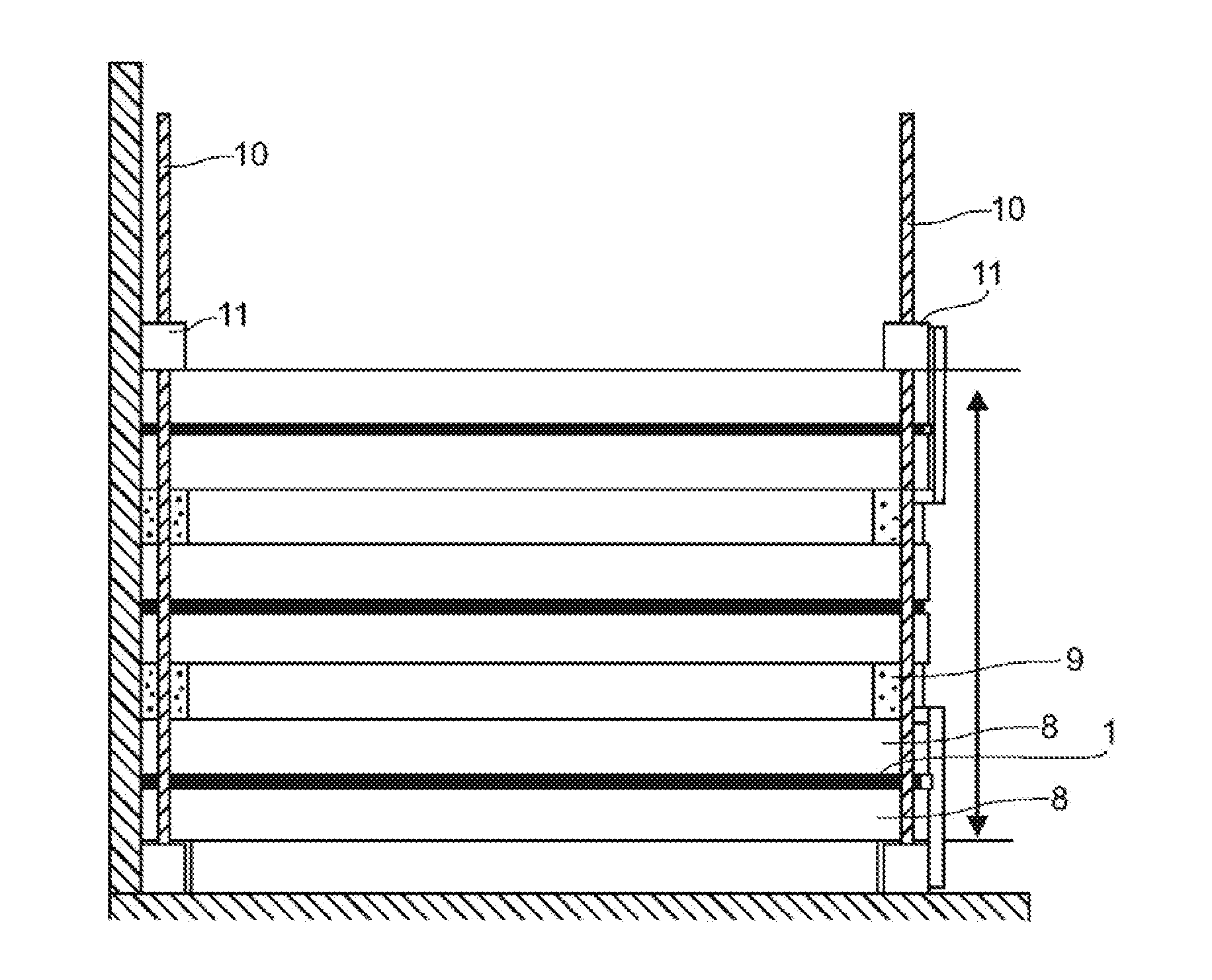Method for measuring potential induced degradation of at least one solar cell or of a photovoltaic panel as well as the use of same method in the production of solar cells and photovoltaic panels
a technology of solar cells and photovoltaic panels, applied in the field of high-voltage degradation measurement methods, can solve the problems of unsatisfactory shift currents and leakage currents via series circuits, significantly reducing parallel resistance and thus their efficiency, and achieving simple and reliable methods
- Summary
- Abstract
- Description
- Claims
- Application Information
AI Technical Summary
Benefits of technology
Problems solved by technology
Method used
Image
Examples
Embodiment Construction
[0031]Referring to FIG. 1, the schematic structure of a photovoltaic module will be described first, for which the measurement method according to the present invention can be performed. The photovoltaic module comprises a plurality of solar cells 4 which are embedded or encapsulated on the front side and the rear side in an embedding material 3, 5, e.g. EVA, so as to provide for a hermetic encapsulation and weatherproof isolation. Furthermore, a back sheet 6 is provided in the usual manner on the rear side. On the front side, the photovoltaic module is covered by a cover glass panel 2. Such a layered structure is embraced in the known manner in a frame (not shown). The conductive plastic material 1 is pressed against the cover glass panel 2 by means of the pressure plate 7 and a high-voltage is applied between the plastic material 1 and the solar cells 4. In a further embodiment, instead of the pressure plate 7 a second photovoltaic module is used, between the cell array thereof an...
PUM
 Login to View More
Login to View More Abstract
Description
Claims
Application Information
 Login to View More
Login to View More - R&D
- Intellectual Property
- Life Sciences
- Materials
- Tech Scout
- Unparalleled Data Quality
- Higher Quality Content
- 60% Fewer Hallucinations
Browse by: Latest US Patents, China's latest patents, Technical Efficacy Thesaurus, Application Domain, Technology Topic, Popular Technical Reports.
© 2025 PatSnap. All rights reserved.Legal|Privacy policy|Modern Slavery Act Transparency Statement|Sitemap|About US| Contact US: help@patsnap.com



